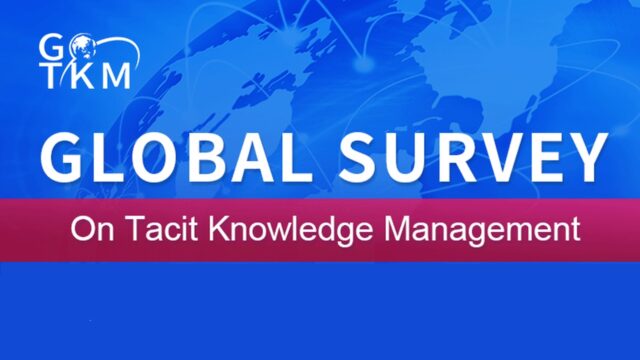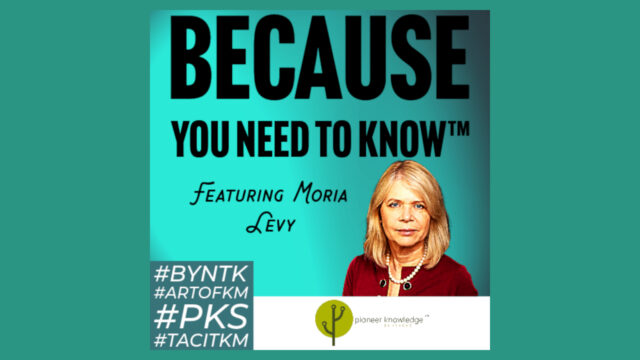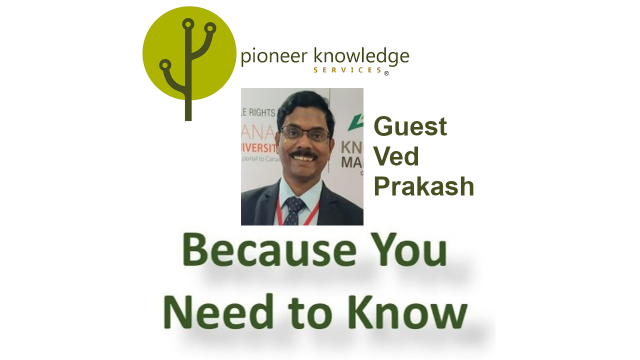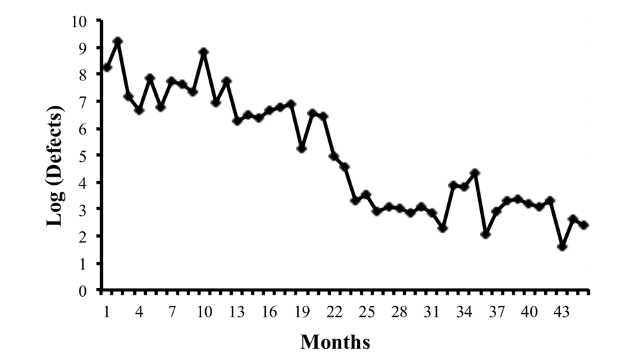
Knowledge retention: 5 clusters of knowledge loss, and 5 interventions
The retention of knowledge, both explicit and tacit, is a critical aspect of organizational knowledge management (KM). In response, Stefania Mariano of American University of Sharjah reviews the academic literature to identify five proposed clusters of knowledge loss that influence the capability of organizations to retain their valuable organizational knowledge, and five proposed interventions to address these knowledge loss clusters. Mariano describes the proposed clusters and interventions in a paper1 presented to the recent 24th European Conference on Knowledge Management (ECKM 2023). With only a few studies having been found to have looked in detail at the disruptive consequences of knowledge loss, Mariano’s paper also provides recommendations for further research.
Mariano’s five clusters of knowledge loss and five related interventions are summarized in the following sections and illustrated in Figure 1 below.
Five clusters of knowledge loss
1. Hanging – When organizational members become repositories of key organizational knowledge, the likelihood of disruptions to this knowledge, or ‘hanging’, may increase if proper retention mechanisms are not in place. If passage of time, infrequent use, or low perceived value influence the extent to which knowledge is used, hanging may occur. Hanging may be particularly detrimental when multiple individuals contribute to organizational processes and, therefore, the loss of one contribution may have a critical impact on overall performance.
2. Fading – ‘Fading’ relates to knowledge retained in storage facilities such as records, archives, collective electronic infrastructure, and databases. The disbandment of storage facilities such as when they break-up or cease to function; or their deterioration―a symptom of reduced quality, strength, passage of time or fall in disuse―are likely to determine the loss of crucial organizational knowledge. Since organizational knowledge may dissipate in the long term―in terms of content as well as the rationale behind it―deliberate and properly planned maintenance strategies are crucial.
3. Disengaging – When organizational members move to other roles, departments, subsidiaries, or geographical locations, this ‘disengaging’ may have potential detrimental consequences to organizational knowledge. Such detrimental consequences may include poor data handover; reduced knowledge accessibility and coordination; disruptions to knowledge flows; disappearances of important contacts; and misplaced, lost nodes, or broken links in networks of relationships.
4. Dissolving – In ‘dissolving’, knowledge is permanently lost. It may be the case of departing organizational members, including internal replacement, quitting, or retirement of employees in an aging workforce, or replaced management teams. Knowledge loss due to turnover includes the parting of subject matter expertise and governance knowledge; loss of knowledge about business relationships and social networks; loss of knowledge of business systems, processes or value chains; and loss of institutional memory.
5. Vanishing – ‘Vanishing’ relates to the complex combinations of collective and physical spaces where organizational activities take place. It may be the case when mergers, acquisitions, of restructuring impose radical changes that have a disruptive influence on the amount and quality of knowledge possessed at the organizational level, creating knowledge asymmetries, and loss of know-how.
Five potential interventions to help mitigate knowledge loss
1. Reminding – ‘Reminding’ addresses with the first cluster of knowledge loss i.e., hanging, It relates to individual knowledge. Reminding is proposed to be performed before (ex-ante) the accidental loss of knowledge may create disruptions at a more collective level. Strategies include prompt mechanisms to avoid knowledge loss due to passage of time or infrequent use of knowledge such as the use of how-to lists to accomplish a routine task; self-training mechanisms to re-acquire knowledge loss due to infrequent use; or the introduction of automated or less automated reminders to be sent periodically to provide the necessary information to accomplish certain tasks.
2. Refreshing – ‘Refreshing’ addresses the second cluster of knowledge loss i.e., fading. It relates to organizational knowledge embedded in storage facilities. Refreshing is proposed to be performed concurrently to keep the storage facilities fully functional. Strategies include the facilitation of both access and maintenance of the storage facilities.
3. Re-acquiring – ‘Re-acquiring’ addresses the third cluster of knowledge loss i.e., disengaging. It relates to knowledge found in the individuals’ networks of relationships. Re-acquiring is proposed to be performed concurrently to keep or strengthen the networks of relationships to find valuable knowledge that otherwise would be lost. Thus, the major aim of re-acquiring would be to facilitate the access to key nodes and links in available networks of relationships, including gatekeepers, brokers, central nodes and, at times, peripheral nodes. Strategies include the facilitation of virtual or less virtual networking sites; datasets of expertise or demographic inventories; or the development of relationships that may help increase knowledge exchange, especially at an intergenerational level.
4. Re-building – ‘Re-building’ addresses the fourth cluster of knowledge loss i.e., dissolving. Re-building is proposed to be performed ex-post, through reflection attempts and performance of actions to restore the lost knowledge, with the overall aim to strengthen the capacity to re-build the knowledge that had dissipated. When the organization realizes that knowledge may have been dissolved, actions to rebuild this knowledge, and to prevent similar disruptions need to be taken. These actions include the re-building of tacit, explicit, or relational knowledge, depending on the knowledge type that has been dissolved, including the overlapping of knowledge to have it always available at multiple locations, for instance implementing a master pool strategy to ensure that multiple individuals possess the needed knowledge.
5. Re-inventing – Finally, ‘re-inventing’ addresses the last cluster of knowledge loss i.e., vanishing. Re-inventing is proposed to be performed when knowledge has been permanently lost, often unknowingly. The major aim is to facilitate the recreation or optimization of knowledge and related processes to favor knowledge reinstatement.
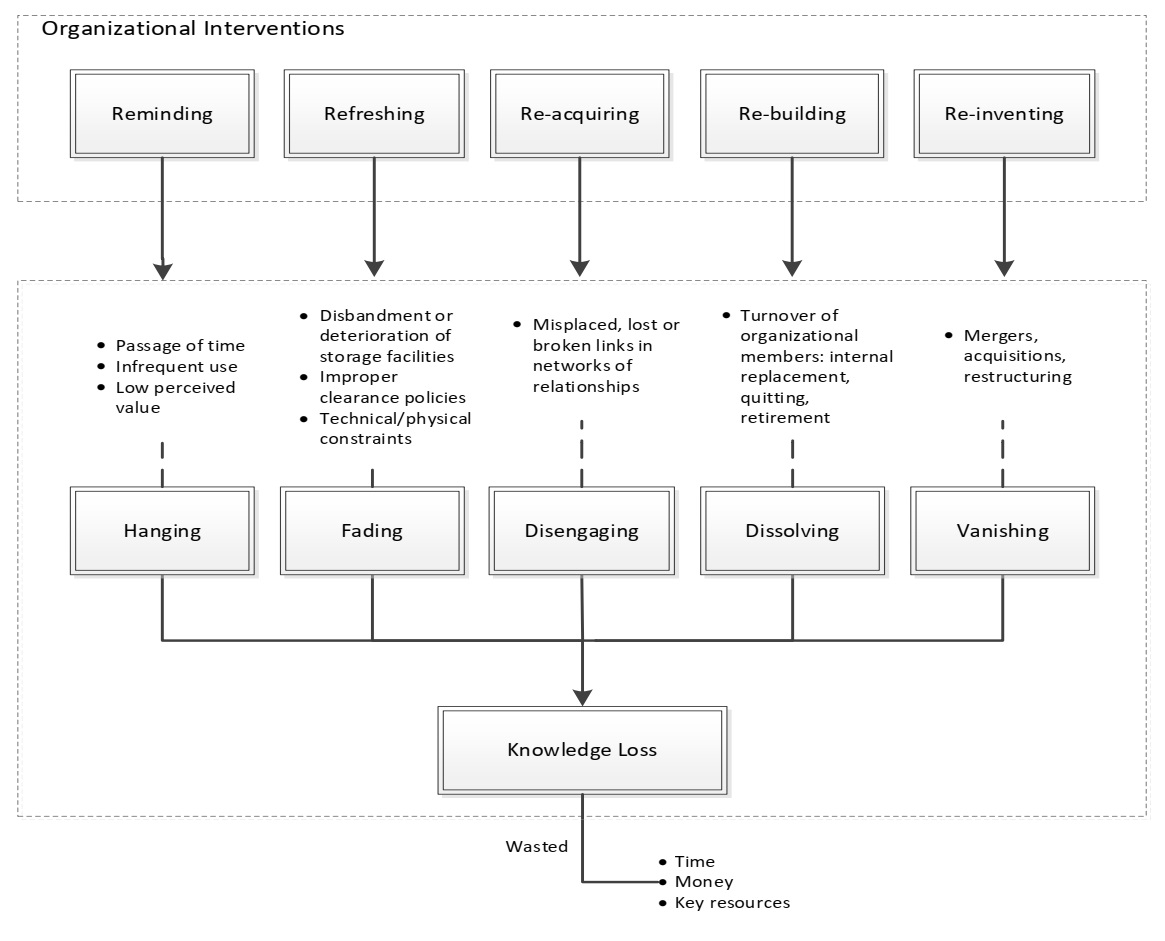
Header image source: Gerd Altmann on Pixabay.
Reference:
- Mariano, S. (2023, September). Mitigating the Disruptive Consequences of Knowledge Loss in Organizational Settings: Knowledge Loss Clusters and Potential Organizational Interventions. In European Conference on Knowledge Management (Vol. 24, No. 1, pp. 872-880). ↩

